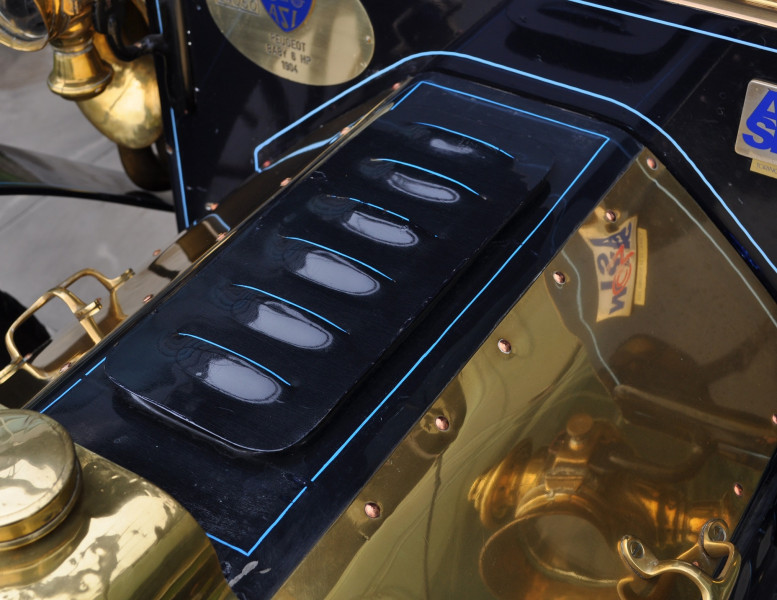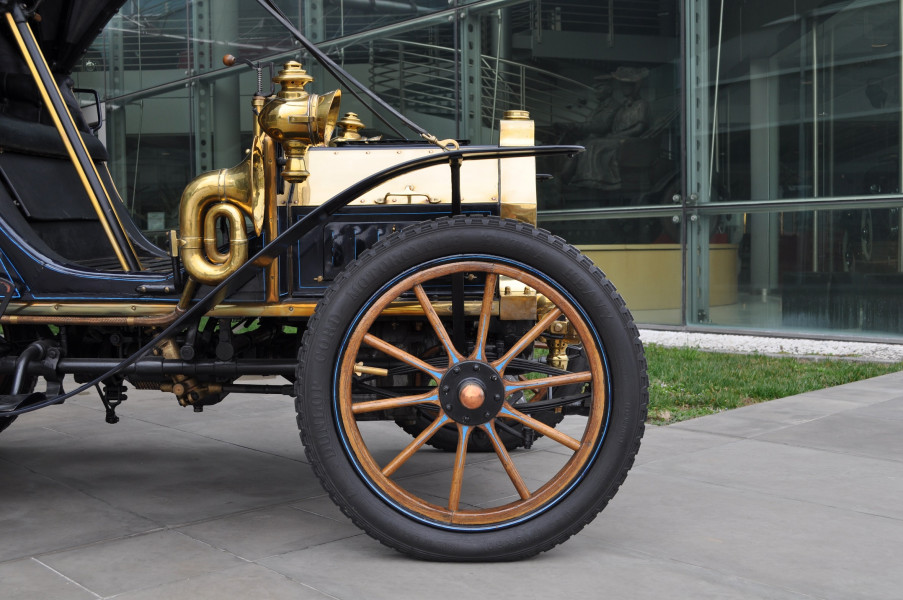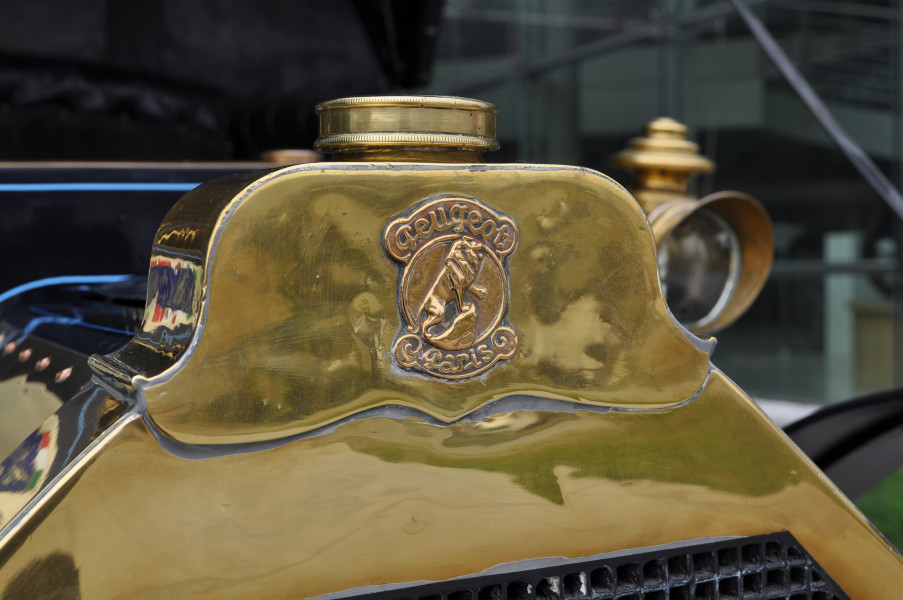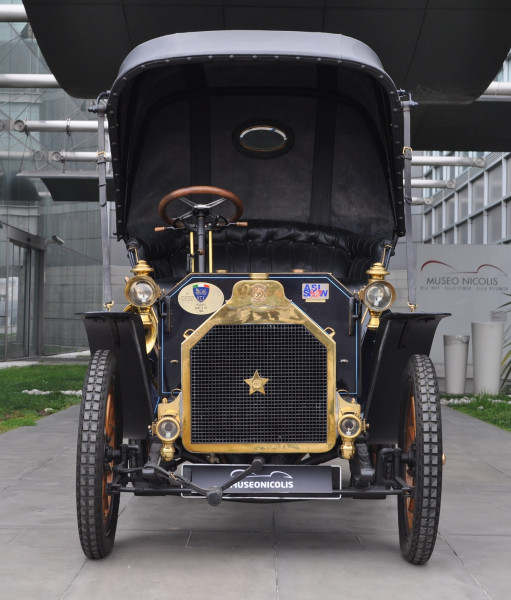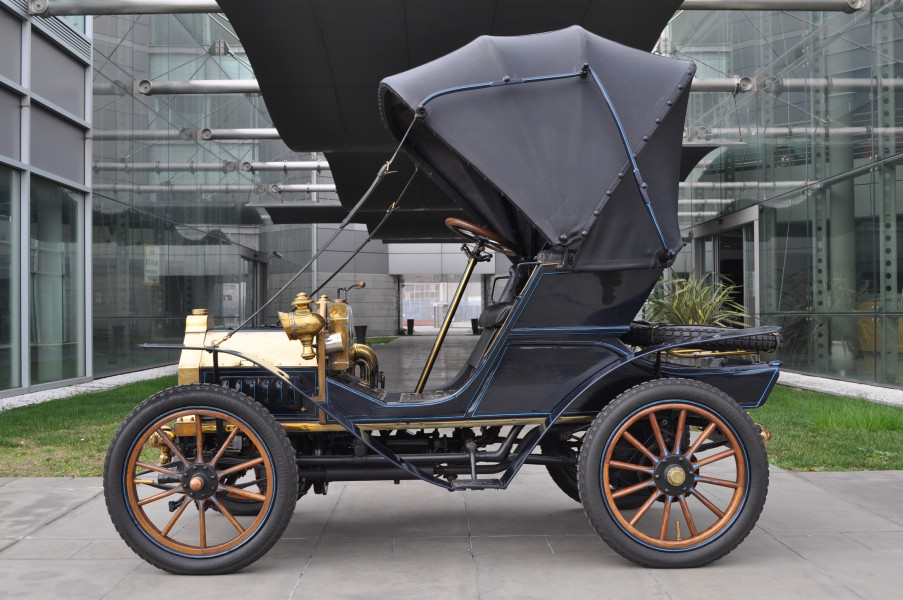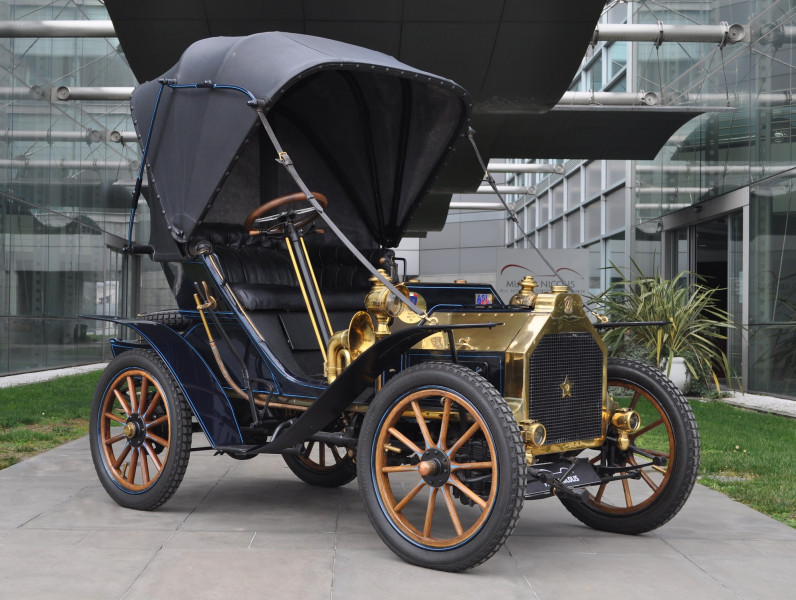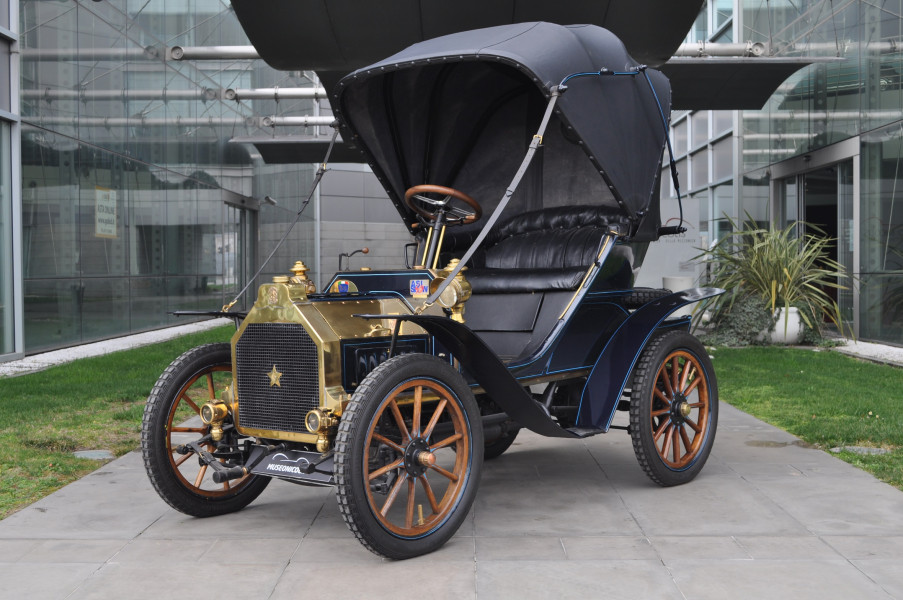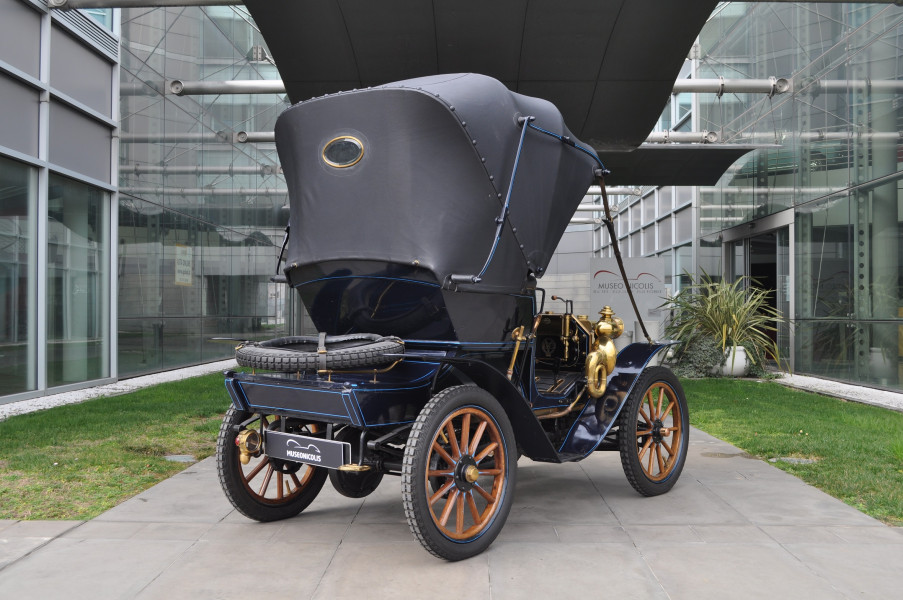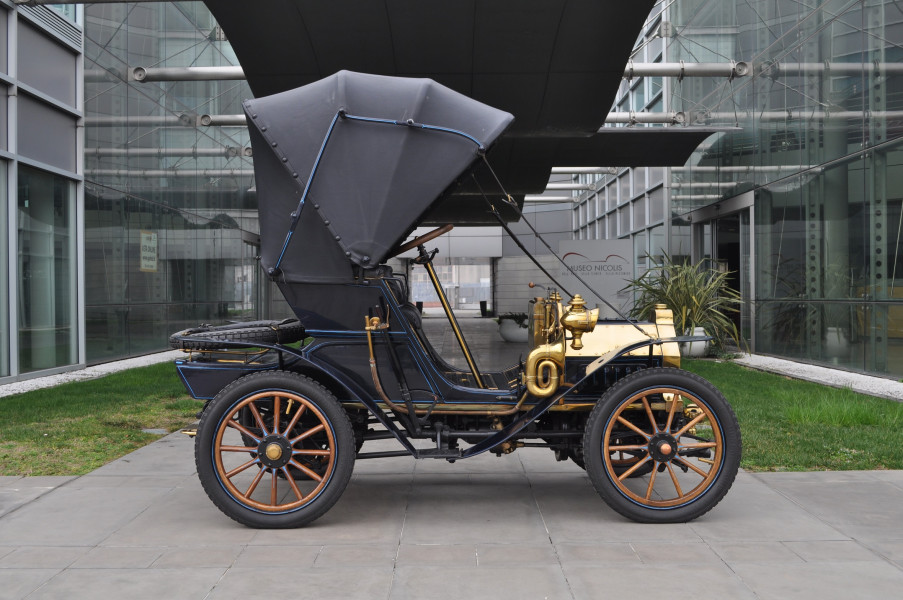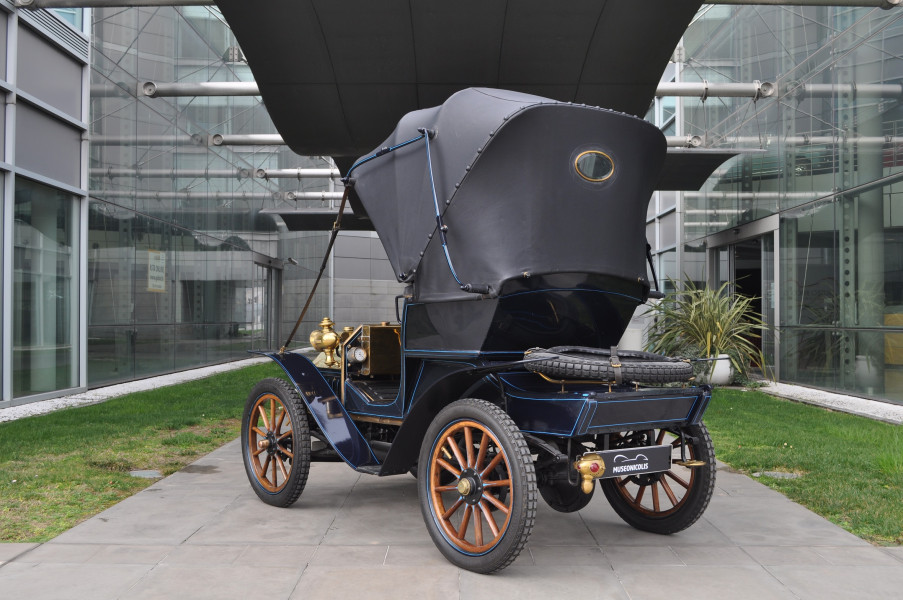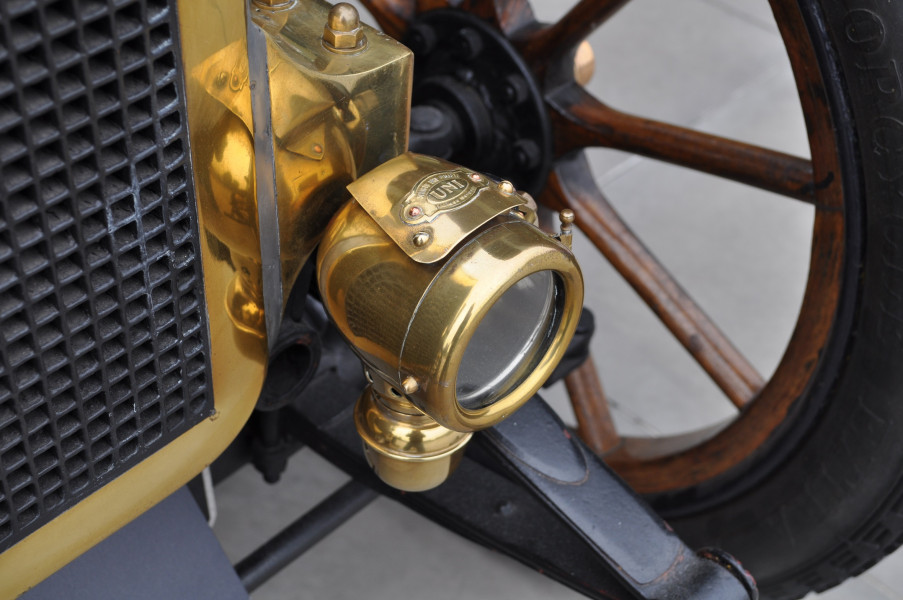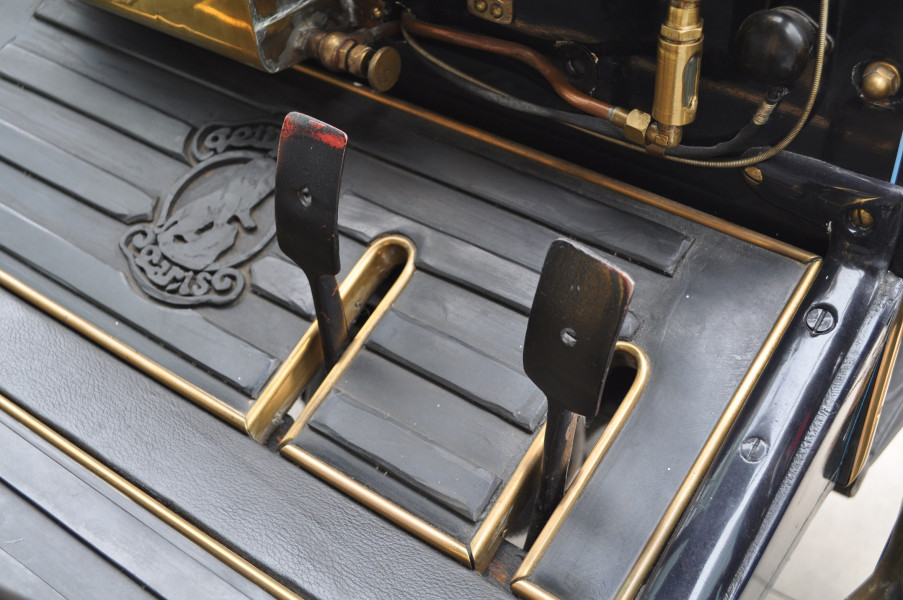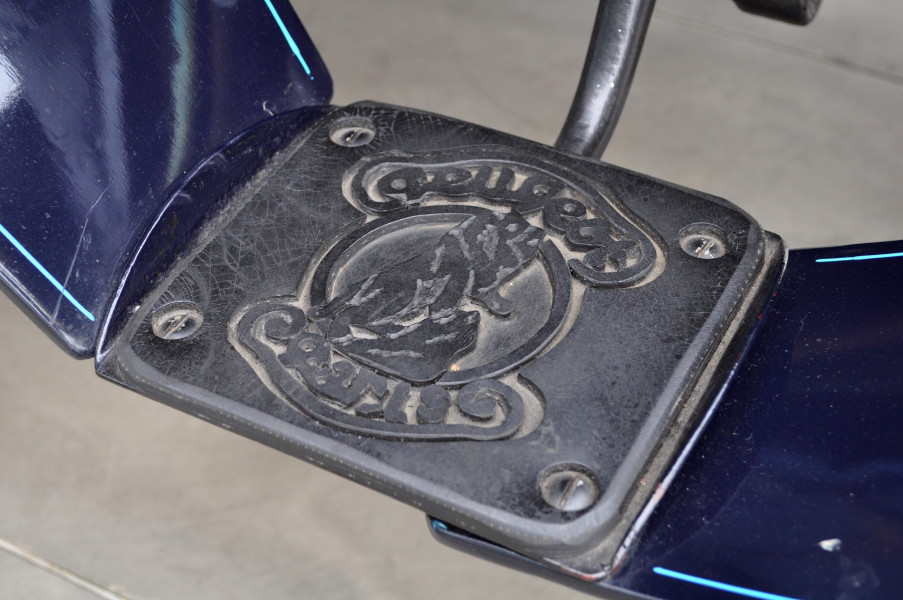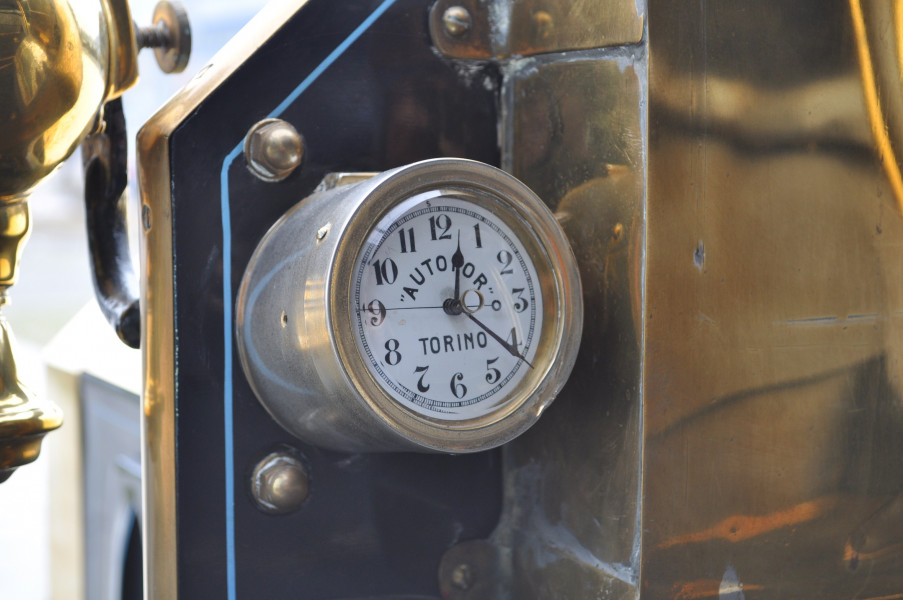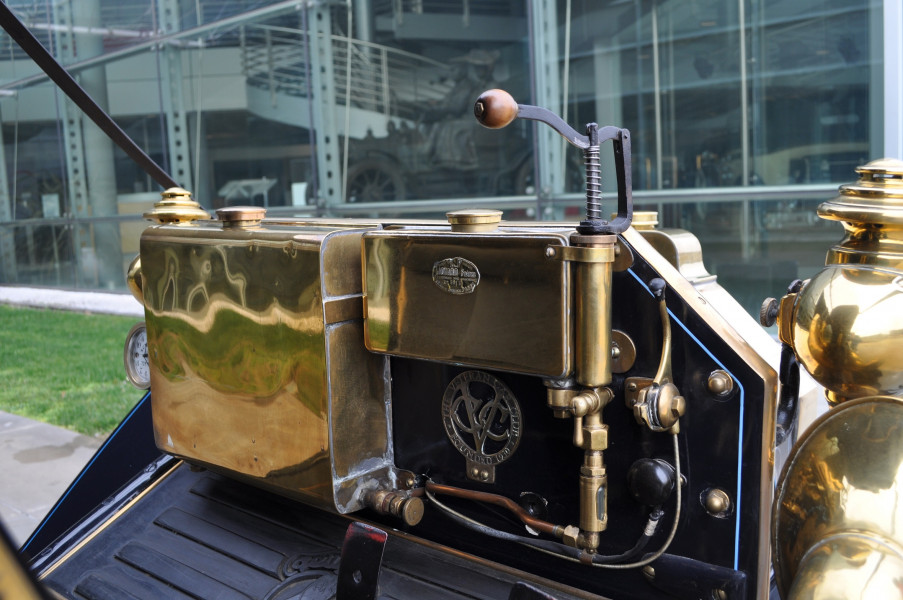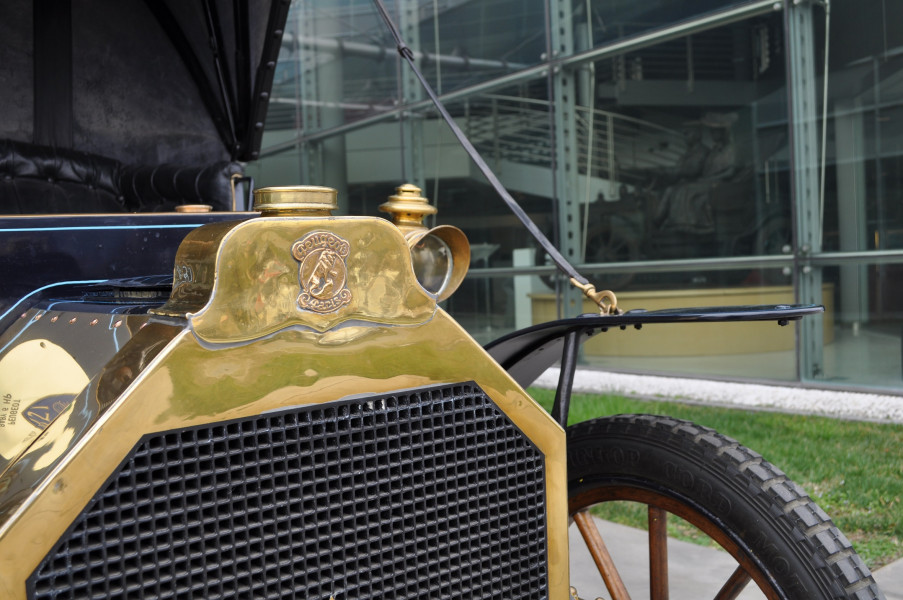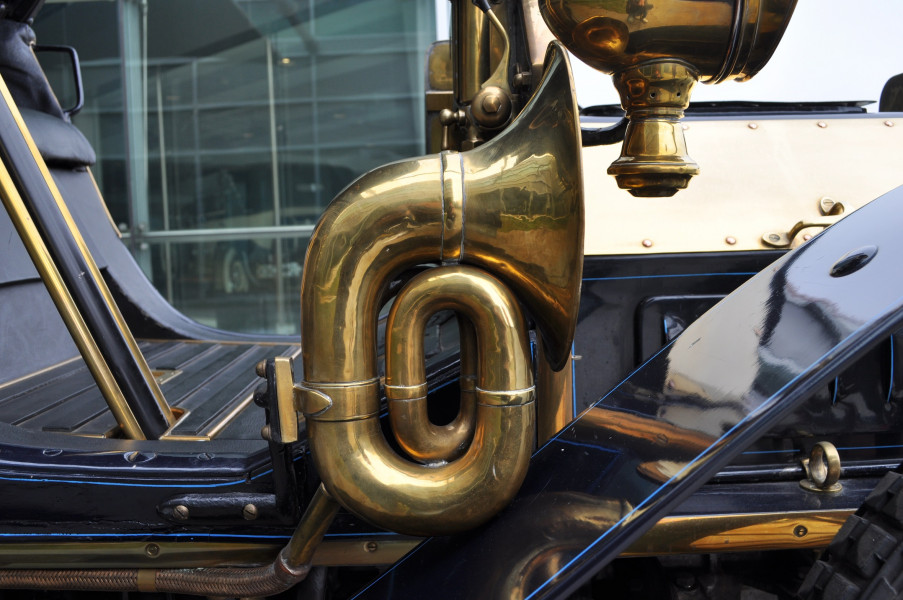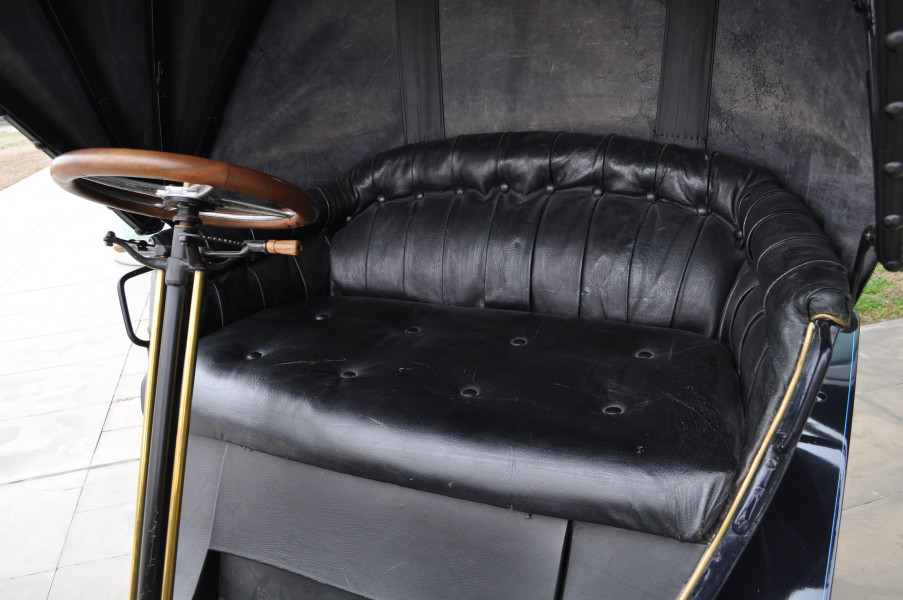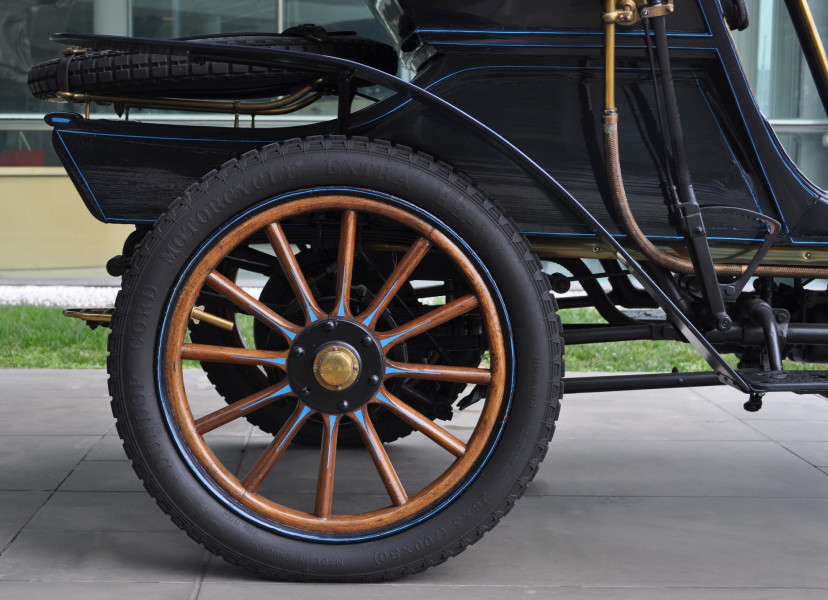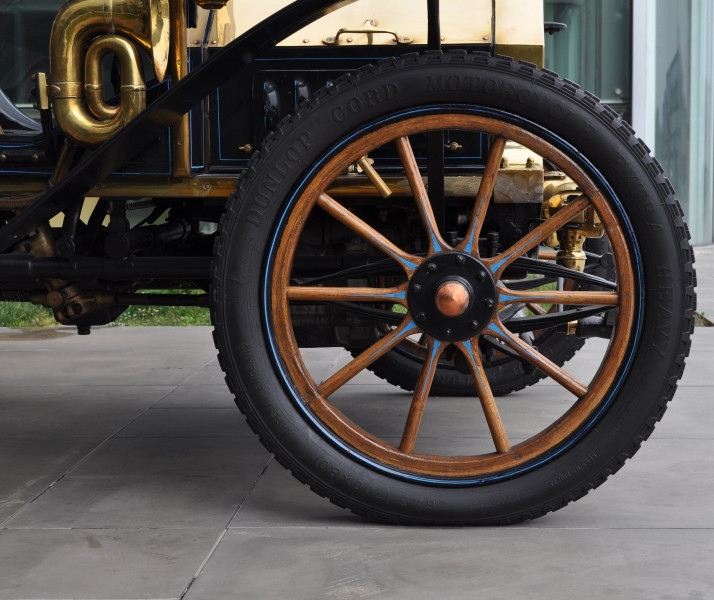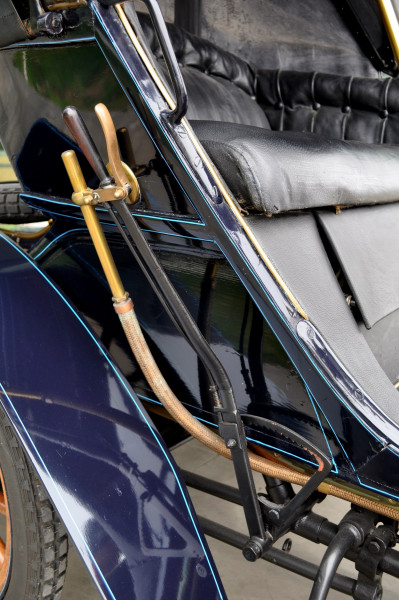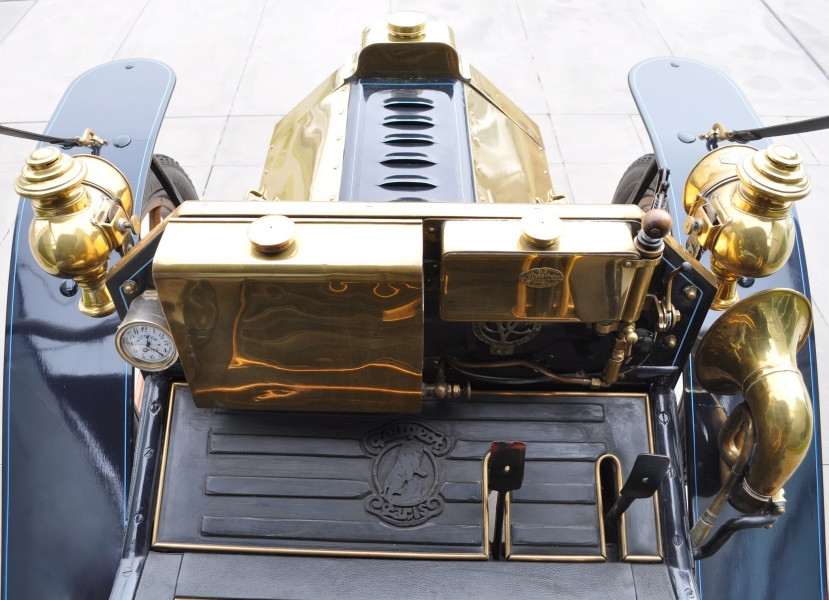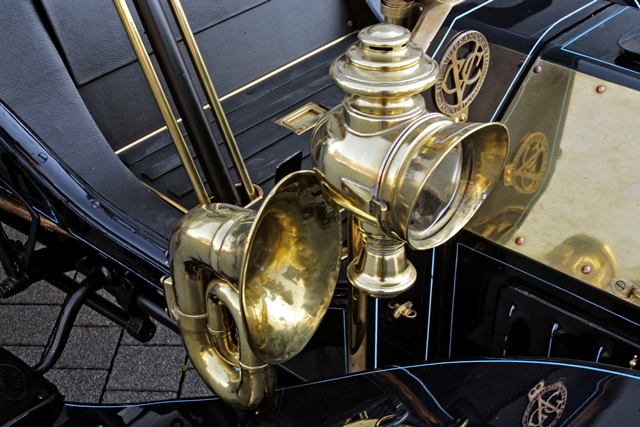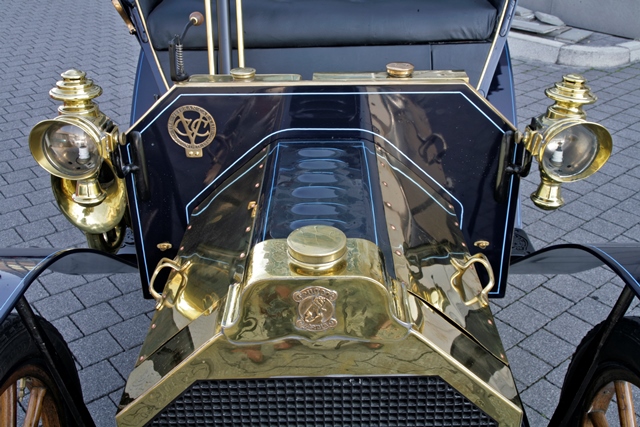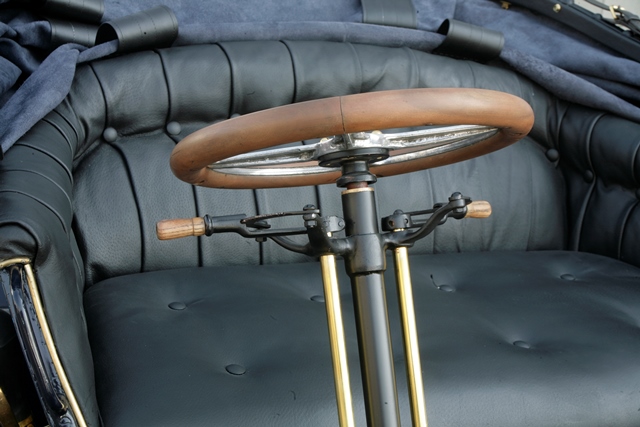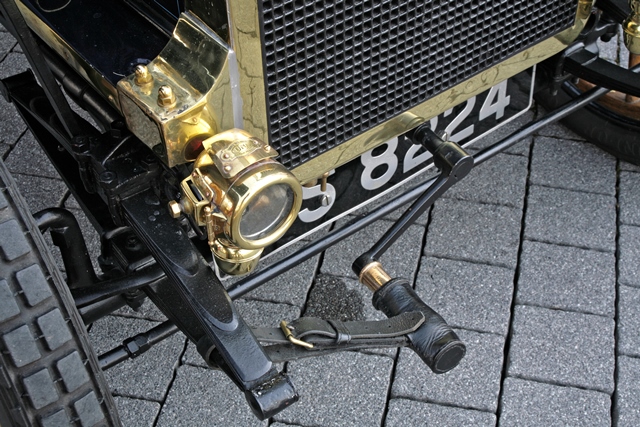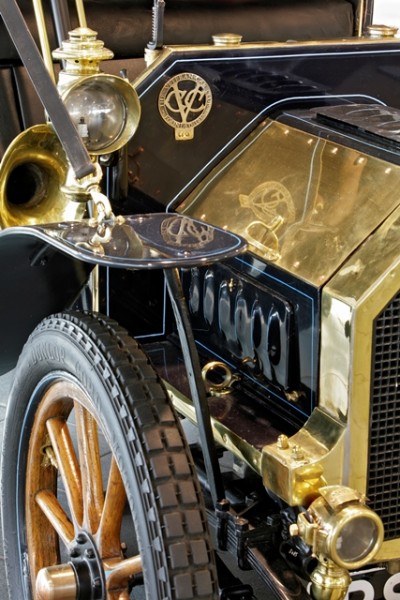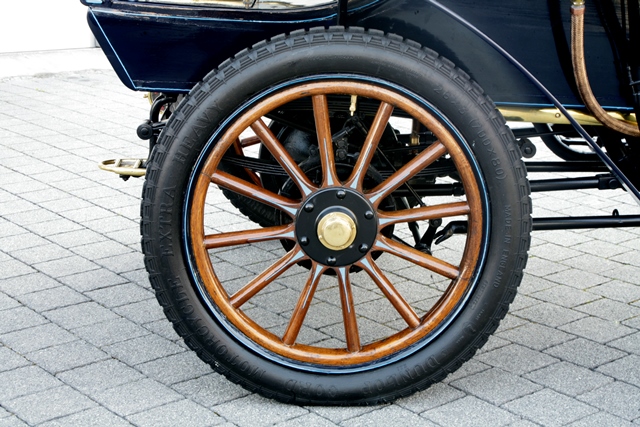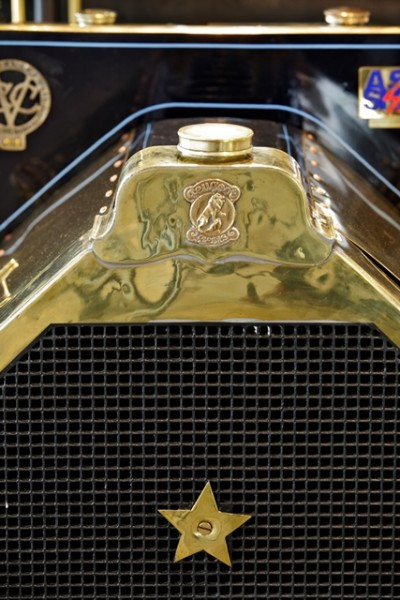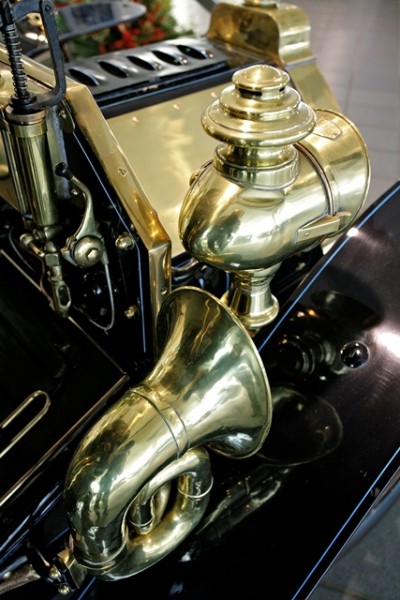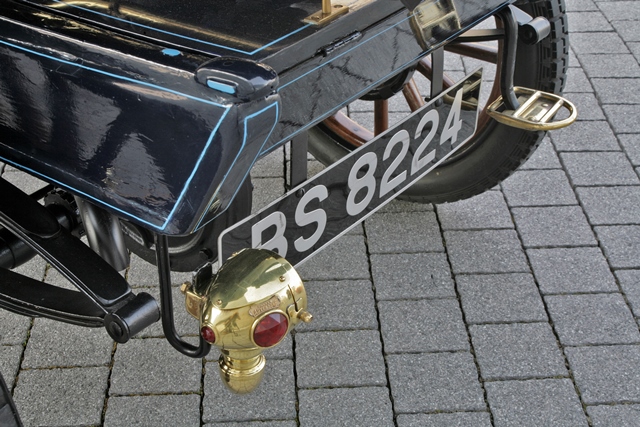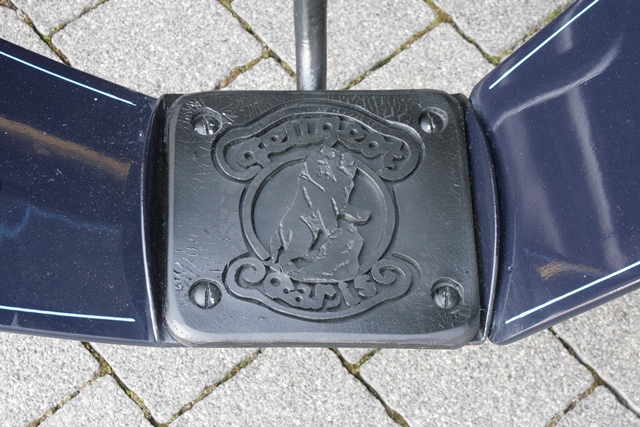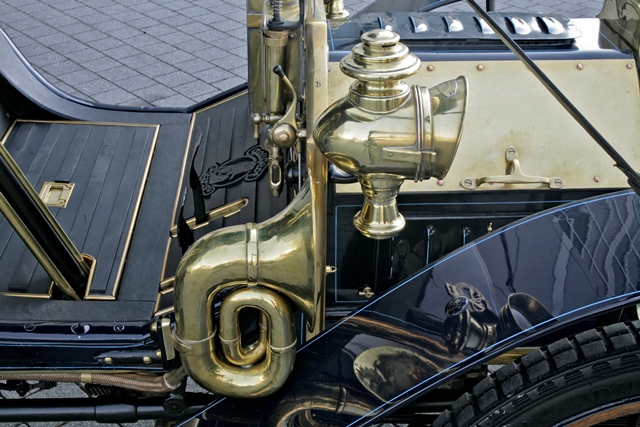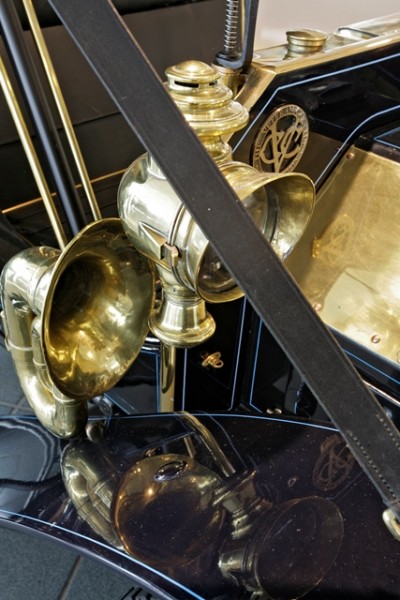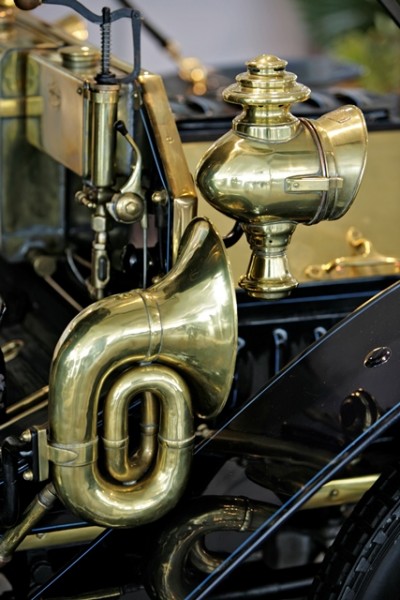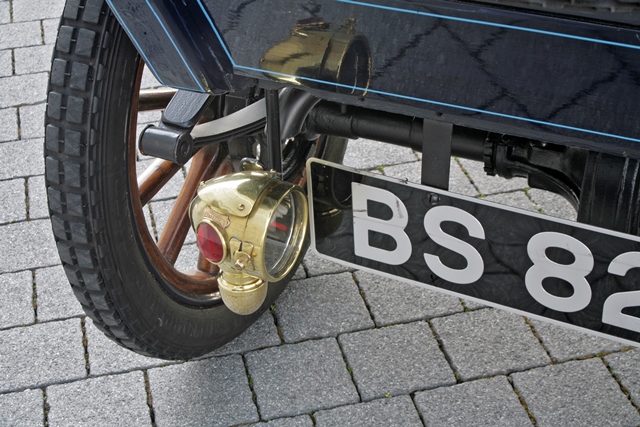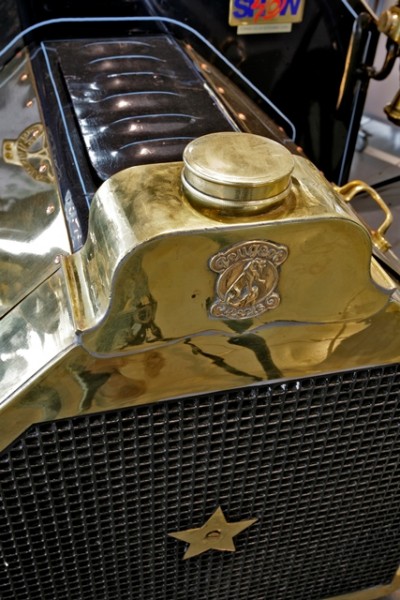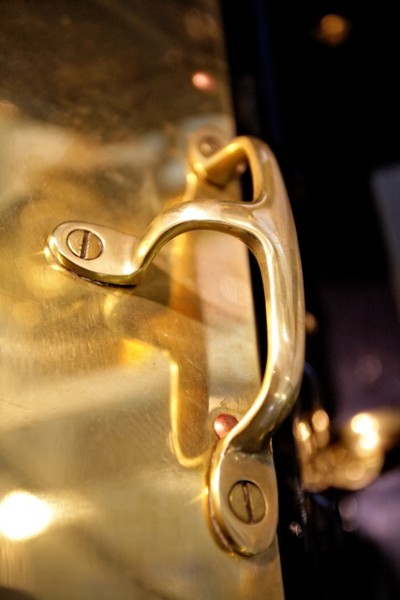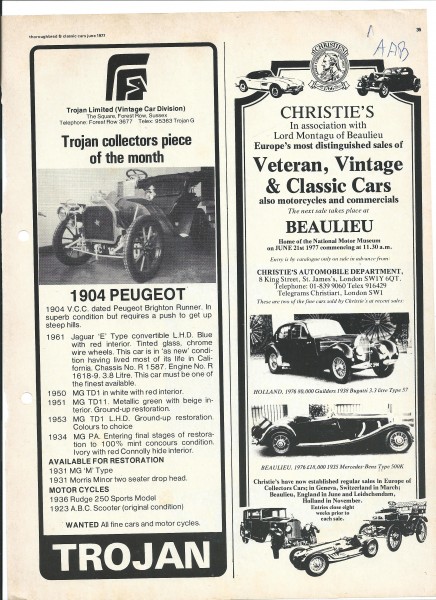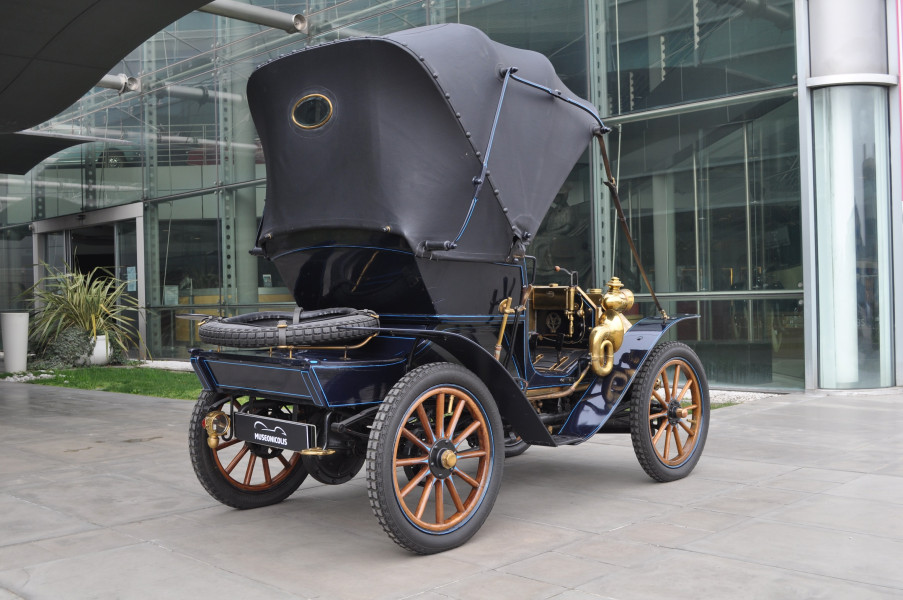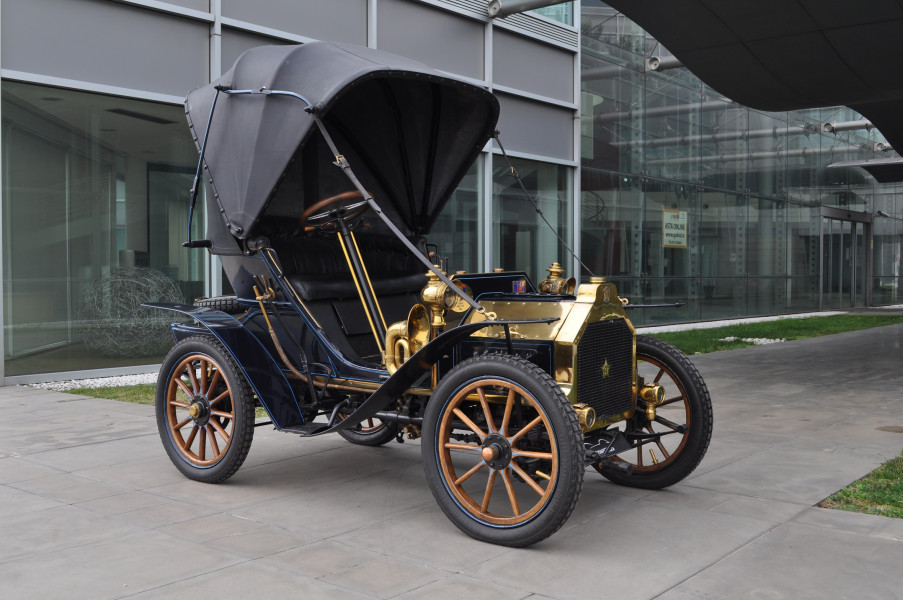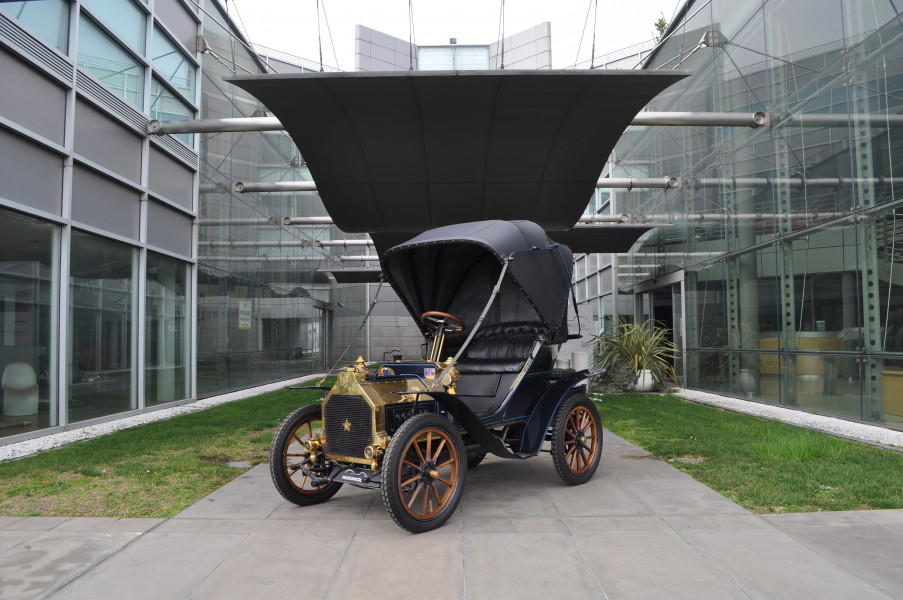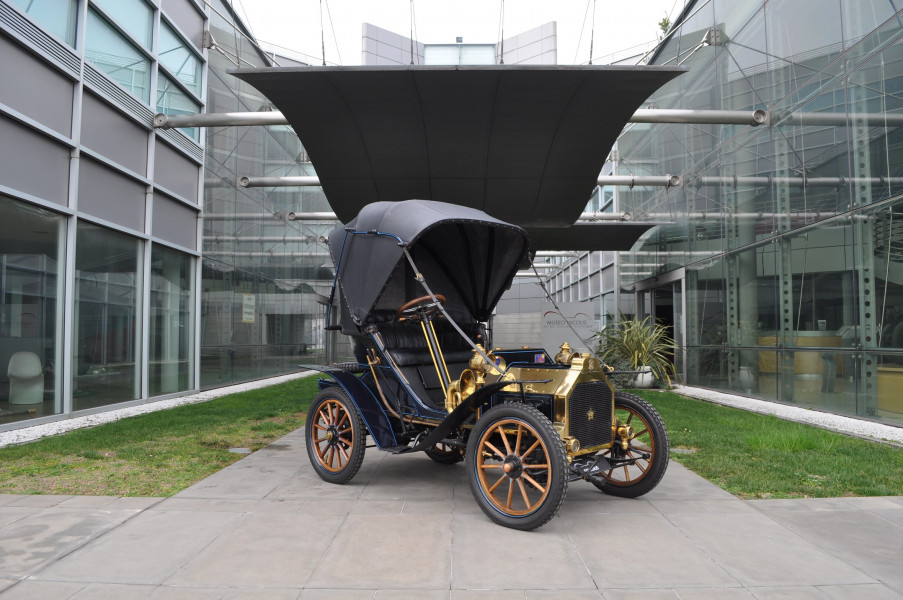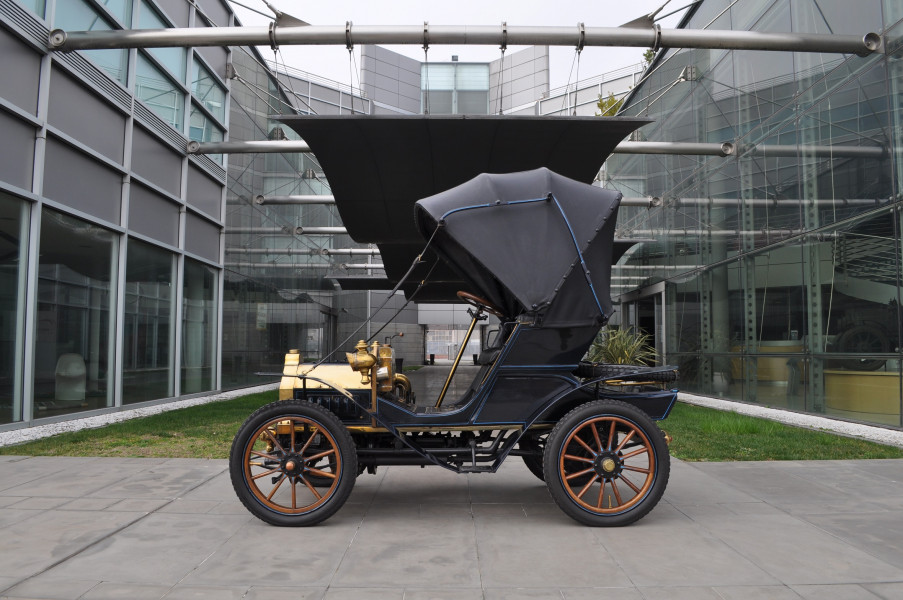Peugeot, 1904, Type 58
Peugeot "Type 58", 1904
The Museum's car is a Type 58, an evolution of the Type 56, which, introduced in 1903, had not met with great commercial success; at that time automobiles were still a luxury good for the few. The engine is a single-cylinder superquadro (102x102mm) with a two-mounted shaft; the clutch is a cone clutch and the transmission a shaft drive with a 3-speed gearbox. Very curious is the removable "mother-in-law's" seat, and thus applicable if necessary in the rear of the car.
Historical Notes:
Apparently, the first owner of an automobile in Italy, of which we have certain documentation, was Gaetano Rossi (son of Senator Alessandro), owner of Lanerossi Vicenza industries, at the beginning of the twentieth century Italy's largest woolen enterprise. In 1892 Mr. Rossi ordered precisely from Peugeot a car with a Daimler engine, complete with soft top and folding seats, which was delivered to him on January 2, 1893. That was the 25th car produced by Peugeot and the first to circulate in Italy. Gaetano Rossi drove the small Peugeot to work from Schio to Piovene Rocchette every day. Then in 1896 he bought another one, and the first one he gave to Guido Lazzari, the husband of the Schio doctor's daughter.In the same year in fact, encouraged by the sporting successes that were favorably reflected in sales, Peugeot began to build cars equipped with engines of its own design and construction; in 1899 the first Peugeot dealership was opened in Italy, and by 1900 the total production of the French manufacturer had reached 500 cars a year.
"THE FIRST VEHICLE TO CIRCULATE IN ITALY: It seems to have been a Peugeot Type 3 - 1893 owned by Mr. Gaetano Rossi, owner of the Lanerossi indutries in Vicenza. The discovery that the Peugeot Type 3 was the first vehicle to circulate in Italy came about recently (1999) after viewing the French Peugeot records in Paris, which show that this vehicle was delivered to Milan and ordered by Mr. Gaetano Rossi in August 1892. Following research conducted by Dr. Fabrizio Taiana of the Peugeot Italia Historical Club and Dr. Michele Marchianò, it was later (in 2006) determined that engine No. 124 combined with vehicle No. 25 still exists and it's on display at the "Mauto, G. Agnelli Automobile Museum in Turin." Source VicenzaToday
History of the Peugeot company:
Peugeot is one of the earliest pioneers on the international automotive scene, with a history as far back as 1810. Then, the Peugeot brothers turned the family mill into a foundry, devoting themselves to producing tools, pepper mills, hand saws and watch springs. Their steelmaking techniques quickly evolved, and the quality of the Peugeot foundry's products soon became renowned throughout Europe.
By 1850, the family business had developed to such an extent that new factories were opened in Valentigney, Beaulieu and Pont-de-Roide. In the same year, the iconic logo representing a lion standing on an arrow was introduced. Over the years, the logo design evolved: the arrow disappeared and the lion changed position, but always retained its symbolic strength.
Above all, Armand Peugeot gave the decisive impetus to automobile production. In 1881, Armand converted the Beaulieu factory to the production of bicycles, an activity that proved extremely profitable. But it was in 1889 that he decided to try his hand at motor propulsion, marking Peugeot's entry into the automotive industry with its first internal combustion engine vehicle. Since then, Peugeot has continued to evolve, producing iconic models that have left an indelible mark on automotive history. In 1896, while the Peugeot brothers' sons continued with the production of bicycles and tools, Armand Peugeot founded the company Automobiles Peugeot, focusing exclusively on car production.
It was not until 1910 that vehicles were produced by a single unit, the company Automobiles et Cycles Peugeot, in which the sons of the Peugeot brothers and Armand Peugeot combined their activities. Nearly 60 years later, in 1965, PSA (Peugeot Société Anonyme) was founded as the holding company of the car group of the same name, taking control of all the companies in the Peugeot Group, and in 2016 it became the PSA Group, representing today its four main car brands: Peugeot, Citroën, Opel and DS.
Peugeot's history spans more than two centuries, testifying to the innovation and passion of a family that transformed a small foundry into one of the world's most prestigious automotive brands.
Watch the VIDEO interview with Fabrizio Taiana
Participated in the Settimana Motoristica Bresciana, watch the VIDEO at min 4.39 (at min 4.24 Luciano Nicolis on Ansaldo)
Raduno Club Storico Peugeot Italia
Shooting, Calze Levante

